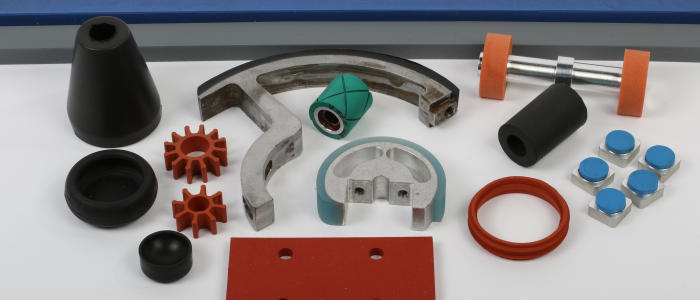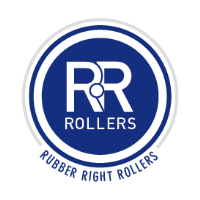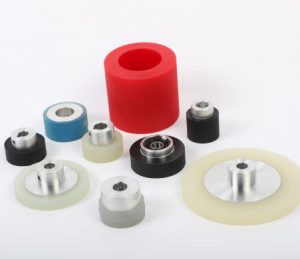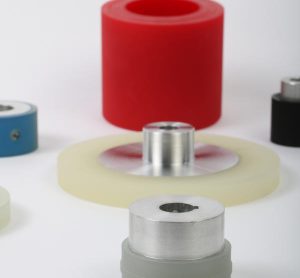
Our experienced tool and die department craftsmen are capable of producing precision molds to suit any application. Our in-house engineer will work with you to assist in the design and manufacture of your custom mold. Single cavity or multi cavity molds are built using high precision CNC machinery. Depending on your needs and budget, we can build the open cast, compression, or transfer molds to create your custom molded products.
Open Cast Molding
The Open Cast Molding process begins with pouring Polyurethane or Silicone into a one-piece open cavity mold. The parts are then cured in an oven. This is a good choice for parts that have tight tolerances on one side only. The parts may require a secondary operation to achieve the specified tolerances. The longer curing and post cure time results in superior physical properties compared to other molding methods.
- Good for Polyurethane or RTV Silicone parts
- Low cost tooling/molds
- Wide variety of durometers
- Usually parts are oversized and require finish machining
Compression Molding
Compression Molding involves preforming a rubber compound to a shape similar to the mold cavity or cavities. The cavity or cavities are then overfilled with the preformed rubber. The top and bottom plates are joined together and compressed under tremendous pressure in a heated press which cures the rubber. Under the pressure, the excess preformed rubber and air escape through overflow grooves in the mold.
- Ideal for low production volumes or larger parts
- Large parts such as gaskets or seals
- Easier to mold harder durometer materials
Transfer Molding
Transfer Molding also involves preforming rubber, but instead of placing it into the cavity or cavities, the rubber is placed into a transfer pot which is between the top plate of the mold and a piston plunger. The mold is then closed and the piston plunger forces the preheated rubber from the transfer pot into the mold through holes or sprues into the mold cavity or cavities. The rubber is then cured with heat and pressure.
- Intricate parts with multiple cavities
- Reduced secondary operations with less flashing and parting lines
- Fewer preforms
- Less chance of contamination when using colored material



